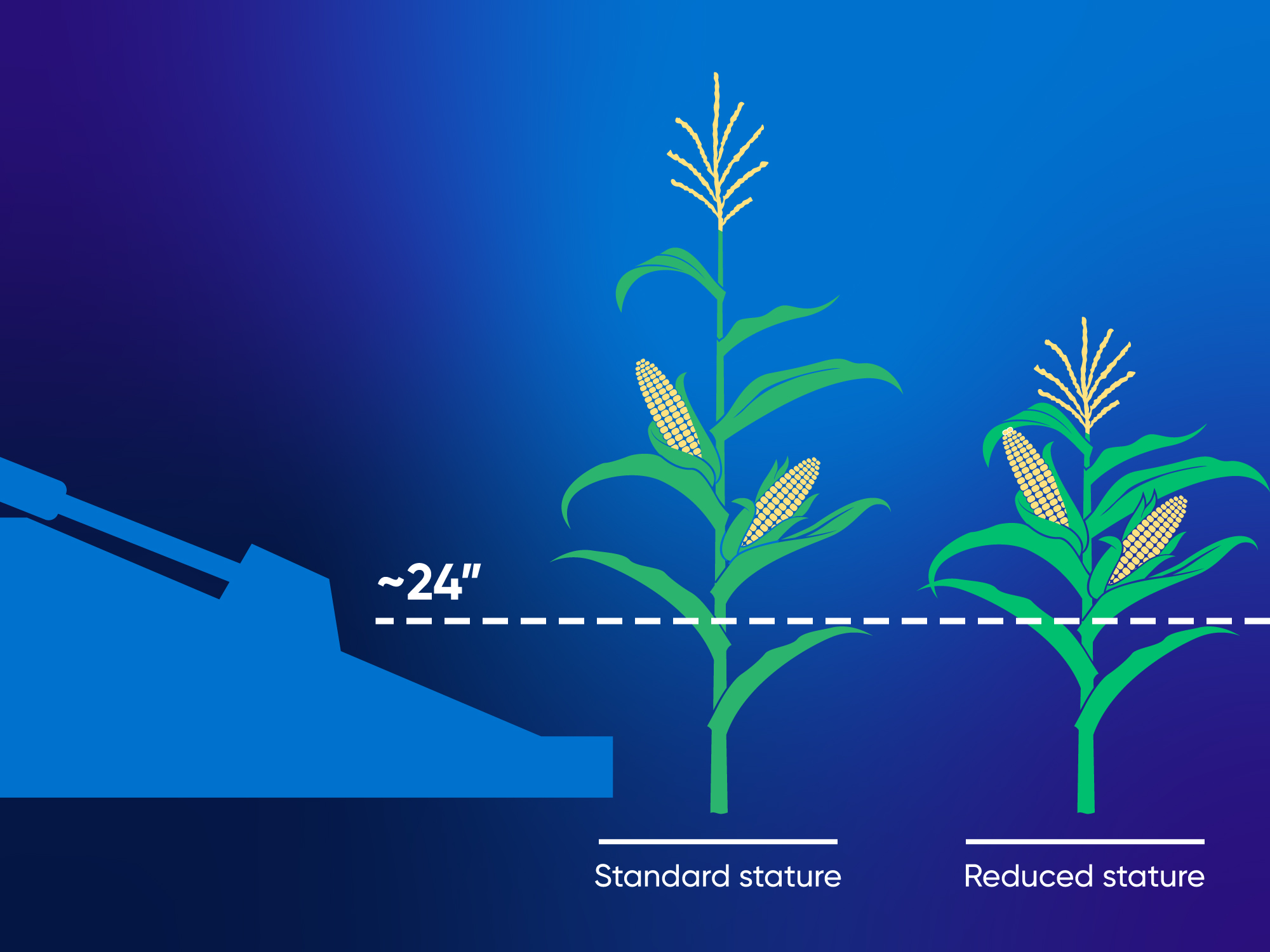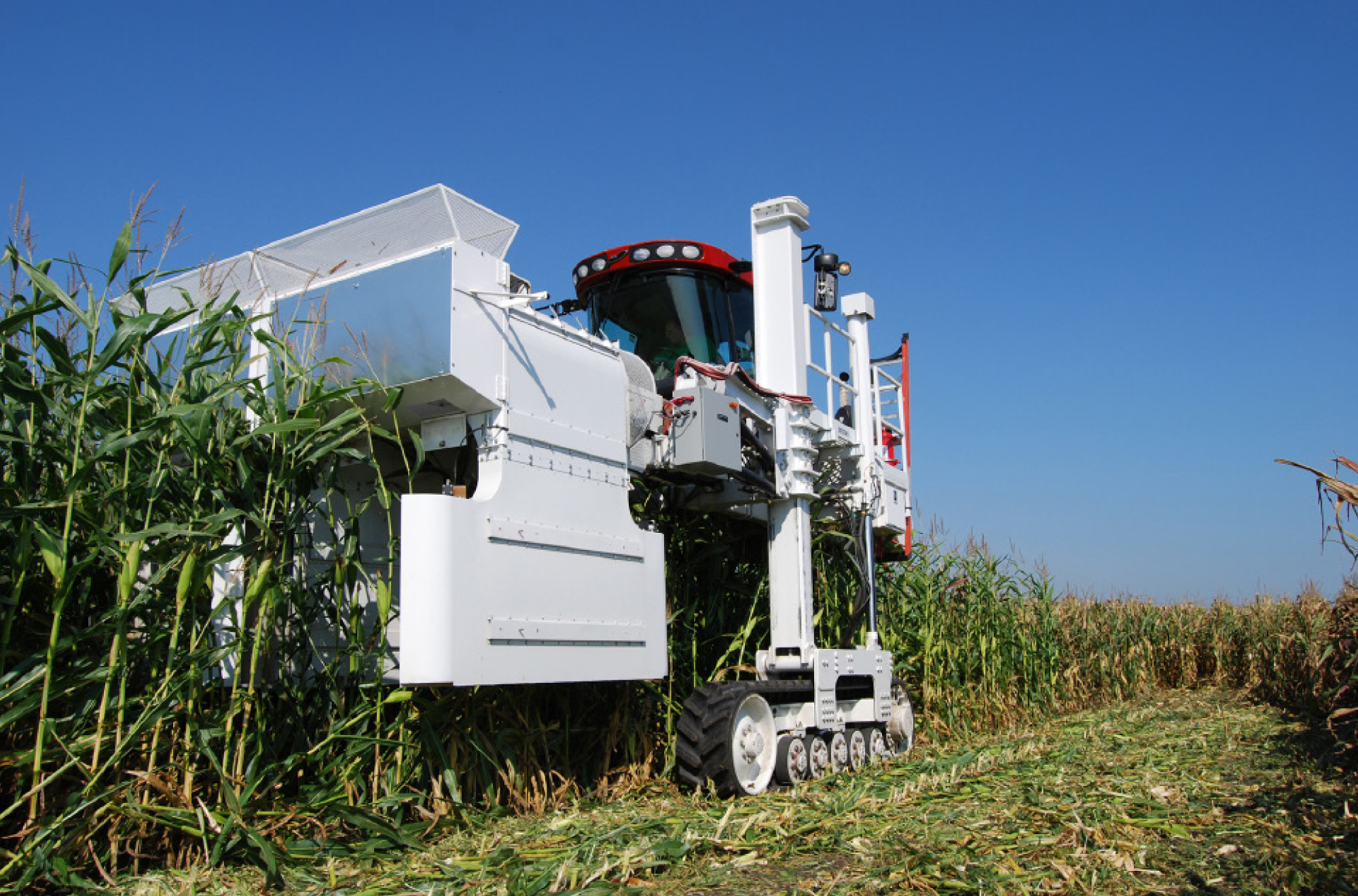The Potential of Reduced-Stature Corn

Reduced-stature corn (RSC) is a concept that has received increased attention in recent years. While the hybrids are new, the process of shortening plant stature is not. Corteva’s reduced stature corn will target stronger stalks and allow for higher planting density per acre without the risk of becoming unharvestable.
Reduction of plant height has been an important innovation in other crops such as wheat and rice, but it has not yet been successfully deployed in corn, despite numerous attempts over the past several decades. The need to continue driving higher yield in corn and increased resilience against severe weather has brought about a renewed focus on the concept of reduced-stature corn.
For over 10 years, Corteva Agriscience and its legacy companies have been developing and testing reducedstature corn through various biotech and breeding programs. Scientists have evaluated multiple genes and approaches for incorporating reduced stature into elite corn genetics.
Some genes and approaches were not successful. Much like previous attempts, they were able to achieve reduced stature in corn but not without compromising yield and/or harvestability. The approach currently being tested appears to offer the best combination of yield potential, resistance to lodging and harvestability.

Reduced-stature corn that has been developed and continues to be evaluated by researchers at Corteva is typically 60 to 76 inches tall at full height, with an ear height of 24 to 36 inches under typical growing conditions. Reduction in plant stature is achieved by uniformly reducing the length of internode distances between leaves over the entire height of the plant.
Reduced-stature plants have the same number of leaves as standard-stature corn with similar relative maturity; however, the leaves are typically shorter in length and wider. Leaf area index (the total amount of leaf area per unit area) is very similar between reduced- and standard-stature corn, which is critical for maximizing light capture and yield potential.

Corteva continues to test its reduced-stature corn using its Boreas wind machines, evaluating for green snap and root lodging. It was found to lodge much less than standard-stature corn.
Another potential benefit of reducedstature corn is that it’s compatible with later-season, overthe-top applications of pesticides and fertilizer. Most modern applicator machines can clear the reduced-stature corn to make field applications at or after tassel.
It is understandable that some growers will have reservations about reduced-stature corn. Harvestability of reduced-stature corn is often a question raised by farmers. Because the plant is shorter, so is the placement of the ear. Corteva understands this and is selecting for hybrids that place ears at least 24 inches above the ground to allow the harvester head on farmers’ current equipment to capture the stalk and pull the ear into the harvester.
™ ® Trademarks of Corteva Agriscience and its affiliated companies. © 2025 Corteva. 025753 LC (03/25)